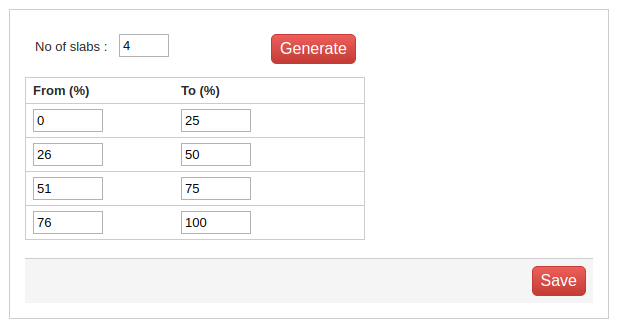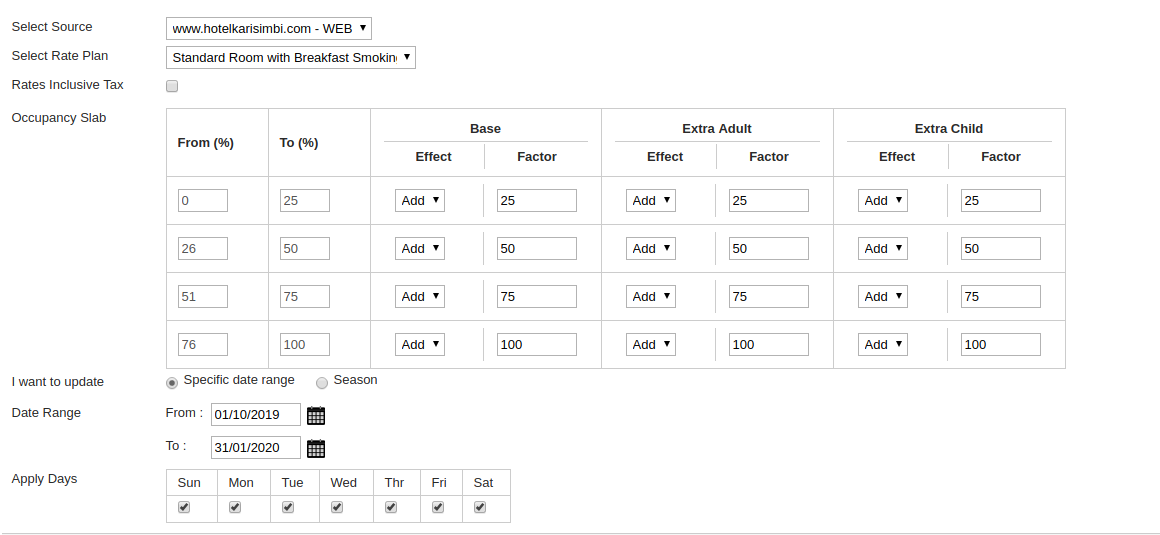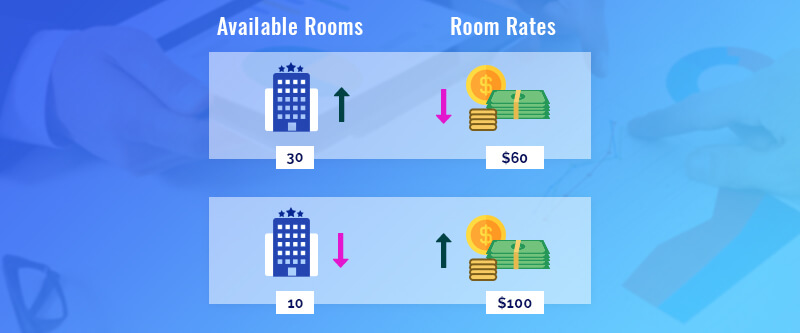Let’s begin this with a question. According to you, what could be one of the key concerns for the hoteliers? Some of you’d say occupancy or happy guests (Well, that’s a must!) or more bookings.
Well, all the answers lead to one and only one factor and that is – maximized revenue.
And to maximize your revenue, you must be applying 100s of strategies. Out of them, yield management is one of the key pricing strategies for hotels.
Table of contents
Now, let’s understand,
What is yield management in hotels?
Yield Management – you must be familiar with this term. If you’re not let me tell you, yield management can be defined as, selling a product or service at the:
- Right rate to
- The right customer at the
- The right time.
In simple words, ‘the process of determining right hotel room pricing is called yield management strategy.’
Now you may think that yield management looks the same as revenue management. (It’s quite natural to get confused between the two). Although, there’s a thin line of difference between both.
What is the difference between yield management and revenue management?
There’s a very thin line of difference between yield management and revenue management. While talking about yield management for hotels, it encompasses the revenue generated through the room charges or occupancy, whereas revenue management involves a whole lot more than just occupancy.
We have a FREE step-by-step guide for hotel revenue management. You can download it from here and get a clear idea.
Hence, yield management is not the same as revenue management, but it’s a subset.
You may think, what happens if you don’t adopt yield management? And what if you do?
To answer that, I would like to explain to you,
What are the benefits of yield management in hotel industry?
There are several benefits of yield management. I’ve listed the three main benefits:
1. Increased revenue:
Yield management in the hospitality industry helps you to make the most of your occupancy. It ensures a higher revenue, even if your occupancy is not 100%. (Regardless of the peak or weak season.) A solid yield management strategy can increase your revenue significantly.
Let’s look at this example:
Suppose your property has 10 rooms, and revenue per available room is 50$. Now, consider these two cases:
Case 1: When all your rooms are occupied. Then your earned revenue is 500$ (Achieved revenue).
Case 2: Now, say you increase your room rate (using yield management technique) from 50$ to 100$ during peak season and sell all the 10 rooms, then your total earned revenue is 1000$. (This is also known as potential revenue)
Now,
Increased Revenue: Achieved Revenue (500$) * 100/ Potential Revenue (1000$) = 50%
In this case, you earned 50% more revenue. This is how you can calculate the potential revenue using yield management.
It is as simple as,
Higher demand = Higher room rates.
2. Decreased errors
With hotel yield management strategies, there’s no chance of making mistakes while setting the price of the rooms. The accurate demand forecasting eliminates any miscalculated risks.
Example:
Initially, you must be randomly changing the prices as and when the high season approaches, but when you practice yield management, you have to perform demand forecasting.
When you perform the data forecasting, you get accurate data with exact details, which helps you to set the best room rates.
Thus, with the precise details, your chances of getting errors.
Now that you know the what and why of yield management, let’s us understand,
How to implement hotel yield management strategy?
For any hotel, it becomes very important to set the RIGHT room rates. Unlike other industries, hospitality industry possesses fixed resources to earn revenue from i.e the number of rooms (Here I’ve excluded the other services that hotels offer).
For that reason, hotels have to stick to the solid pricing strategy for rooms.
In this case, yield management is the best practice for the hotels to strategically sell their rooms at optimized rates.
As I said previously, hotel yield management is all about demand and supply. So, to apply the result-driven yield management strategy you have to perform the following steps:
- Decide the occupancy slabs
- Decide the room rates as per the occupancy slabs
- Apply yield management strategies
- Constant monitoring
Let’s dig deeper into each step one by one:
Decide the occupancy slabs
Out of several factors, here are a few important ones which affect your occupancy slabs:
- Based on seasons
Generally, a hotel’s year is classified in two seasons: 1. High season and 2. Low season.
Festivals are considered the peak seasons for hotels. During festivals, hotels witness a hike in their bookings.
Let me tell what you have to do:
Simply find out the maximum occupancy during the high and low season. Compare it with your year-round average occupancy. You can even analyze the upcoming year’s calendar and find out the following holidays.
- Major festivals of your region
- Long weekends
- Annual holiday periods (Christmas, New Year, etc.)
- Public holidays
- School holidays
- Local events (annual festivals, sporting events, concerts, etc.)
Once you have analysed occupancy, you can create the occupancy slabs smartly to drive more revenue.
- Based on location
Your property’s location poses as an important factor as well. You may ask, ‘how Mehul?’
Well, let’s say your hotel is located near a stadium or a central convention center, where some recurring events like- Sunburn, cricket tournaments, events, and expos are being hosted.
Needless to say, there are high chances of receiving more bookings during such events.
So what you can do is list down such annual events in advance. Then when the event is approaching, apply the yield management strategy as discussed in the above points.
Here you can vary the occupancy slabs as well as the room rates.
- Based on past occupancy
Along with the occupancy, you can also drill down your hotel’s past occupancy levels/percentage.
Let’s say, during last year’s high season, your average occupancy was 80% whereas, during the low season, your average occupancy was 40%.
#Protip: You can make your low season a profitable one by applying effective hotel promotion ideas, instead of keeping your rooms vacant.
From these data, you’ll definitely get a rough idea on your last year’s minimum and maximum of occupancy percentage. So, you can create the slabs wisely.
Decide the room rates as per the occupancy slabs.
Once you have created the slabs the next important step is to decide the room rates for each slab. For that, you have to consider the following factors.
- Guest types:
Your hotel must be welcoming a variety of guests viz. corporate guests, backpackers, solo-travellers, family groups, and likewise.
Now you see, all these different types of guests have their different requirements. For example, corporate guests mostly stay for a longer period of time. And they generally look for a budget yet comfortable stay.
Moreover, business travelers tend to book at the last minute. (Consider this factor as well.)
Howbeit, the family or groups are leisure travelers, who are more likely to spend more and might look for better amenities.
Set the room rates for different occupancy slabs based on various factors.
- Based on past ADR, RevPar
Average Daily Rate (Read: ADR) and Revenue per available room (Read: RevPAR) are the two key parameters that affect your hotel’s revenue to a great extent.
Basically, when you drill down your hotel’s past data, also find out which different room rates (ADRs) gave you maximum RevPAR.
By studying this data, you’ll be able to determine the room rates which drive maximum revenue (as well as bookings) for your hotel. .
Applying Yield Management
Now, you know different aspects to consider while forming the yield management strategy for your hotel. But, you may still wonder about the IMPLEMENTATION of these strategies! Don’t worry! You can automate this pricing with yield management systems effortlessly.
You can configure slabs in a channel manager and booking engine. As and when you receive bookings (occupancy increases), your rates change according to the configured occupancy slabs.
Let me show you how it happens with one of the real-time yield management examples:
Firstly, we’ll see how to create occupancy slabs.
Let’s say, during the first 3 months of 2019, your average occupancy was 80% and the highest occupancy was 95%.
Now you can easily predict that you’ll receive a similar occupancy this year as well.
So, you can make the following slabs:
- 0-25%
- 25-50%
- 50-80%
- 80-95%
- 95-100%
Then you can to define the number of slabs as shown in the below screenshot:

Now let’s move on to the next step – to decide the rates of slab-wise pricing.
Firstly, I’d like to tell you that you can increase the room rates in two ways, either percentage-wise or amount wise.
| Occupancy level | % Increase or Amount increase | |
| 0-25% | $40 (Base room rate) | $40 Basic room rate |
| 25-50% | $44 (10% increase ) | $50 |
| 50-80% | $46 (15% increase ) | $75 |
| 80-95% | $50 (25% increase) | $100 |
| 95-100% | $54 (35% increase) | $125 |
Then, select the following things and complete your slab:
1. Source (it can be your booking engine or any pother OTAs)
2. Rate plan
3. Configure the rates as per different slabs
4. Select the date range. (The duration in which you want to apply this pricing)
And you are all set! Refer to the following screenshot:

IMPORTANT NOTE: The example of slab wise pricing mentioned above is not a standard one. It is for illustration purposes only. Depending on the trends and your hotel’s data, you can change your slabs.
Basically, with the booking engine and channel manager that support the yield management pricing, you can update your pricing on all platforms. (website, OTAs, and on every platform to which your hotel is connected with.)
Thus, all you have to do is configure the slabs, sit back and relax. Rest of the things are taken care of by the yield management system.
See, how to configure yield management in eZee Centrix.
Constant Monitoring and updating yield
Well, this is a key thing to consider while you practice yield management strategies for your hotel. It is the monitoring of market trends. So I would recommend that once you have configured the slabs in the system, DO NOT stick to these slabs adamantly. You can monitor your competitor’s rates, the latest trends of the industry, or many other things and be dynamic about your changes.
When you apply a variable pricing strategy, you always want to keep a check on your competitors’ rates and analyze them to make sure you have a prototype ready for your rate prediction.
While you are increasing or decreasing your room rates, you should know what your competitors are doing. It may happen that during high season you are increasing your rates, while your competitors are not. And they grab all the bookings.
So, I would recommend, always keep an eye on your competitors, before making any changes on your pricing.
#Protip: Nowadays, there are tools like rate shopper, that gives your competitor's rates right in your system.
In a nutshell, through yield management, you can get more revenue by focusing on profitable bookings. Unlike those hotels who may make the mistake of emphasizing booking volume and losing potential revenue.
Conclusion
In this blog, I have tried to cover every nook and corner of the yield management for hotels.
Apart from this, you don’t have to outsource it from third-party revenue management agencies or hire a revenue manager. You can do it on your own with the advanced technology solutions that support yield management.
While selecting the booking engine and channel manager, you should definitely see this feature as the key parameter. If your current solutions don’t support this slab wise pricing, I would recommend changing your system right away!
In case you have any doubts or concerns, tell in comments. I’d love to help you!



